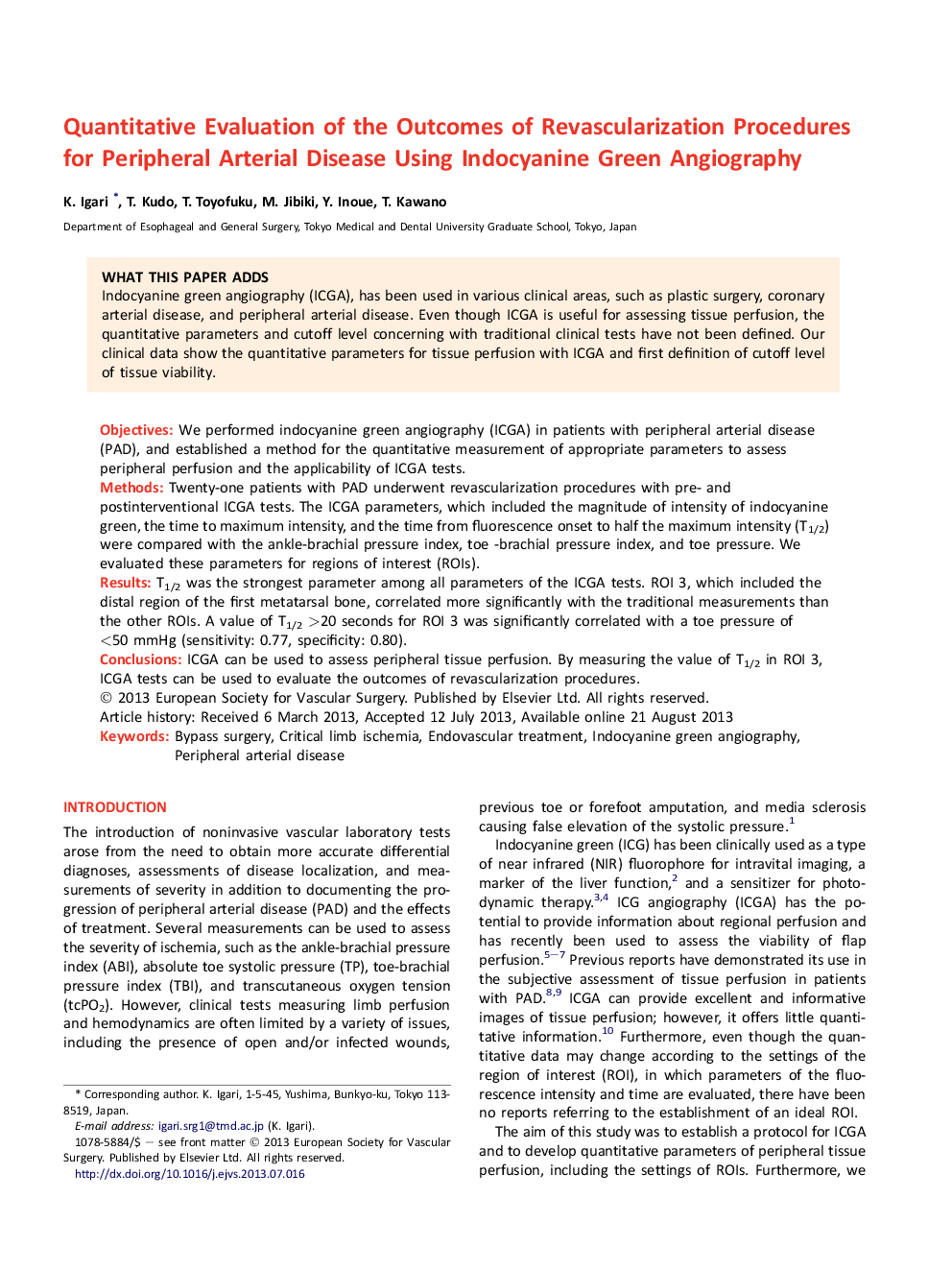| Article ID | Journal | Published Year | Pages | File Type |
|---|---|---|---|---|
| 2912219 | European Journal of Vascular and Endovascular Surgery | 2013 | 6 Pages |
ObjectivesWe performed indocyanine green angiography (ICGA) in patients with peripheral arterial disease (PAD), and established a method for the quantitative measurement of appropriate parameters to assess peripheral perfusion and the applicability of ICGA tests.MethodsTwenty-one patients with PAD underwent revascularization procedures with pre- and postinterventional ICGA tests. The ICGA parameters, which included the magnitude of intensity of indocyanine green, the time to maximum intensity, and the time from fluorescence onset to half the maximum intensity (T1/2) were compared with the ankle-brachial pressure index, toe -brachial pressure index, and toe pressure. We evaluated these parameters for regions of interest (ROIs).ResultsT1/2 was the strongest parameter among all parameters of the ICGA tests. ROI 3, which included the distal region of the first metatarsal bone, correlated more significantly with the traditional measurements than the other ROIs. A value of T1/2 >20 seconds for ROI 3 was significantly correlated with a toe pressure of <50 mmHg (sensitivity: 0.77, specificity: 0.80).ConclusionsICGA can be used to assess peripheral tissue perfusion. By measuring the value of T1/2 in ROI 3, ICGA tests can be used to evaluate the outcomes of revascularization procedures.
